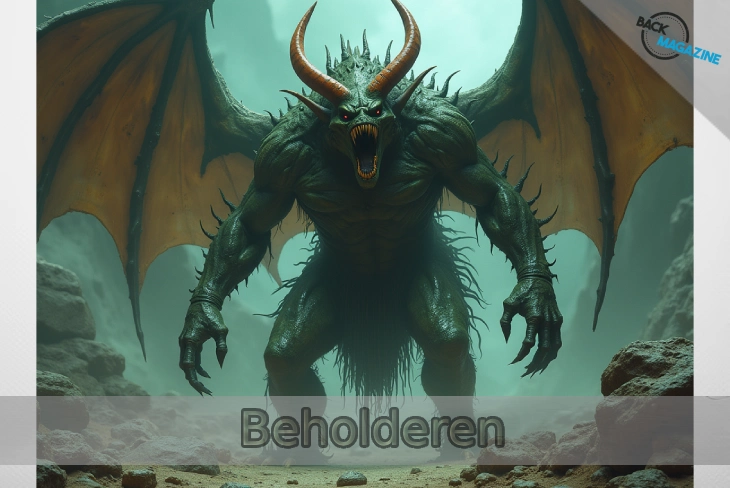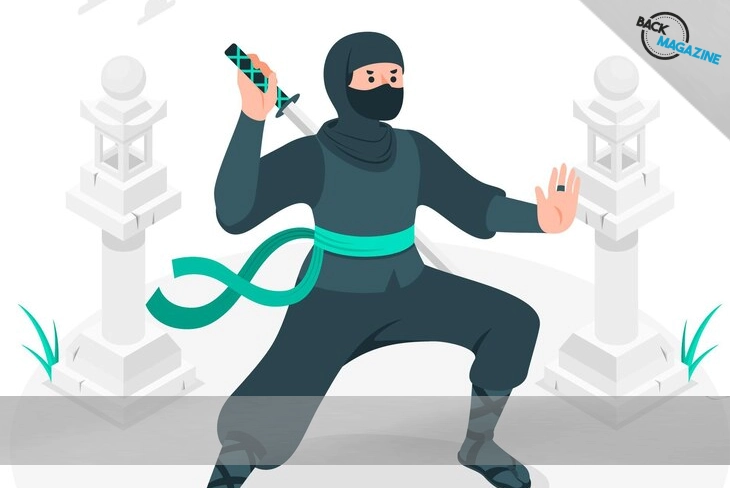
Beholderen – ‘Mythical Eye Monster’
Beholderen, a creature of fantasy and imagination, has captivated the minds of gamers and storytellers for decades. This article delves into the origins, characteristics, and cultural impact of this iconic monster. We’ll explore its role in gaming, its unique abilities, and how it has evolved over time. Whether you’re a seasoned dungeon master or just curious about fantastical creatures, this comprehensive guide will give you a new perspective on the beholderen.
Origins of the Beholderen
The beholderen, often simply called a beholder, first emerged in the realm of tabletop role-playing games. It was born from the creative mind of Gary Gygax, one of the co-creators of Dungeons & Dragons (D&D), in 1975[3]. Gygax drew inspiration from various mythological sources and his own imagination to craft this unique monster.
But why “beholderen”? The name itself evokes a sense of observation and perception. It’s a creature that sees all, quite literally, with its multiple eyes. The term “beholder” in English means “one who observes,” and this monster certainly lives up to that name[1].
Anatomy of a Beholderen
Picture a floating orb of flesh, about the size of a person, covered in eyes. That’s your basic beholderen. But it’s not just any old eyeball monster. Let’s break down its key features:
- The central eye: This is the beholderen’s main weapon. It can shoot out a beam that nullifies magic, making it a nightmare for spell-casters[3].
- Eyestalks: Surrounding the central eye are several smaller eyes on stalks. Each of these can fire off different magical effects, from paralyzing rays to disintegration beams[3].
- Toothy maw: Below all those eyes is a large mouth filled with sharp teeth. While not its primary weapon, a beholderen can certainly take a bite out of its enemies if they get too close[3].
This unique anatomy makes the beholderen a formidable foe. It can attack multiple targets at once, each with a different magical effect. Plus, its ability to float means it’s not limited by terrain. No wonder it’s become such an iconic monster in the D&D universe!
Beholderen in Gaming Culture
Since its introduction, the beholderen has become a staple of fantasy gaming. It’s not just limited to D&D anymore. You’ll find versions of this eye-covered monster in video games, board games, and even in some fantasy literature[3].
In the gaming world, encountering a beholderen is often seen as a rite of passage. It’s a challenging foe that requires strategy and teamwork to defeat. Players need to think creatively to overcome its various magical abilities and its anti-magic central eye.
But the beholderen isn’t just a tough enemy. It’s also become a symbol of the creativity and imagination that tabletop role-playing games foster. Its unique design challenges players to think outside the box and come up with innovative solutions.
Types of Beholderen
While the classic beholderen is impressive enough, the D&D universe has expanded to include several variations. These different types add even more variety and challenge to the game:
- Death Tyrant: Imagine an undead beholderen. That’s essentially what a Death Tyrant is. It’s got all the powers of a regular beholderen, plus some extra necrotic abilities[3].
- Basilisk Beholder: This variant combines the beholderen with another classic monster, the basilisk. It can turn creatures to stone with its gaze[3].
- Hive Queen Beholder: This special type of beholderen can produce offspring called “beholderkin.” These are smaller versions of the beholderen[3].
Each of these variants adds a new dimension to encounters, keeping players on their toes and adding depth to the beholderen lore.
Beholderen Abilities
What makes a beholderen truly terrifying is its array of magical abilities. Each eyestalk can produce a different effect, and the central eye has its own unique power. Here’s a quick rundown of what a typical beholderen can do:
- Anti-magic cone: The central eye projects a cone that suppresses all magic within it. This can be devastating against magic-using characters[3].
- Eye rays: The smaller eyes can produce various effects, including:
- Charm
- Paralysis
- Fear
- Slowing
- Inflicting damage (various types)
- Telekinesis
- Sleep
- Disintegration
- Death
With this arsenal at its disposal, a beholderen can adapt to almost any situation. It’s no wonder they’re considered one of the most challenging and iconic monsters in fantasy gaming.
Cultural Impact of Beholderen
The beholderen has left its mark not just in gaming, but in wider pop culture too. Its unique design has inspired artists, writers, and creators across various media. You might spot beholderen-like creatures in fantasy art, on book covers, or even in movies and TV shows.
In the gaming community, the beholderen has become something of a mascot for D&D. It’s often used in marketing materials and merchandise. Its image is instantly recognizable to fans of the game, even those who’ve never faced one in play.
But the beholderen’s impact goes beyond just its appearance. It represents the creativity and imagination that tabletop role-playing games encourage. The beholderen challenges players to think creatively, work together, and overcome seemingly impossible odds. In many ways, it embodies the spirit of these games.
Incorporating Beholderen in Your Game
If you’re a dungeon master looking to add a beholderen to your campaign, here are some tips:
- Build suspense: Don’t just throw a beholderen at your players out of nowhere. Drop hints, create an atmosphere of mystery and danger[3].
- Use its abilities creatively: A beholderen is smart. Have it use its various eye rays strategically, not just randomly[3].
- Create a unique lair: Beholderen are often found in complex, maze-like lairs that play to their strengths[3].
- Develop its personality: Beholderen are intelligent creatures. Give yours a unique personality and motivations[3].
Remember, a beholderen encounter should be memorable. It’s not just another monster to defeat, but a significant challenge that your players will talk about long after the game is over.
Beholderen Beyond D&D
While the beholderen originated in D&D, its influence has spread far beyond. Many fantasy games and stories feature creatures inspired by the beholderen. They might not always be called beholderen, but the influence is clear: multiple eyes, magical abilities, and a floating, spherical body.
This spread shows the lasting impact of the beholderen concept. It’s become a part of the shared language of fantasy, recognizable even to those who’ve never played D&D. The beholderen has truly become a classic monster of the genre.
The Future of Beholderen
As D&D and other fantasy games continue to evolve, so too does the beholderen. New editions of the game have tweaked its abilities and lore, keeping it fresh and challenging for new generations of players.
But the core concept remains the same: a floating orb of eyes, each with its own magical power. It’s a testament to the strength of the original design that it’s remained so popular for so long.
Looking ahead, we can expect to see the beholderen continue to adapt and change. Maybe we’ll see new variants, or perhaps it’ll show up in new forms of media. Whatever happens, one thing’s for sure: the beholderen will continue to capture imaginations and challenge players for years to come.
Conclusion
The beholderen, with its bizarre appearance and formidable abilities, has earned its place as an icon of fantasy gaming. From its humble beginnings in the early days of D&D to its current status as a pop culture phenomenon, the beholderen has come a long way.
Whether you’re facing one in a game, drawing inspiration from its unique design, or just appreciating its place in fantasy lore, the beholderen is a creature that demands attention. It challenges us to think creatively, to work together, and to face our fears.
So the next time you’re rolling dice or crafting a story, remember the beholderen. It’s more than just a monster – it’s a symbol of the imagination and creativity that make fantasy gaming so special.





No Comment! Be the first one.